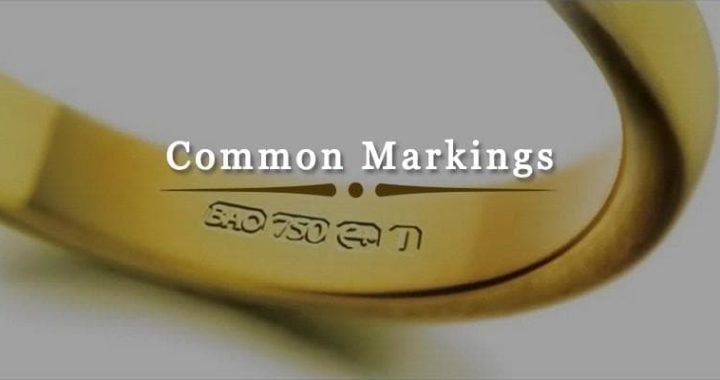If you own any gold jewelry, you might notice that there’s a small number marked on it. Most people assume these numbers indicate the manufacturer or batch of jewelry, but they actually mean something completely different. Experienced gold buyers know exactly what these numbers mean, and they use this information when determining how much they will pay you for any jewelry you’re trying to sell them. Here’s a quick guide to these common gold markings.
A Measure of Gold Purity
These numbers indicate how pure the gold is. Pure gold is actually much too soft for jewelry and other items, plus it’s virtually impossible to get gold that has absolutely no impurities in it. That means gold traders and jewelers need some way of identifying just how pure the gold they’re purchasing is. The result of this need is the various markings you’ll find on gold estate jewelry and other items.
The formula used to determine these markings isn’t complicated, but it isn’t obvious to most customers. Gold is usually sold by the karat. Everyone knows that 24 karat or 24K gold is the highest form of gold you can get. It’s considered pure gold, though again, it’s not 100% pure. Instead, it’s .9999 fine.

To determine how fine your gold is, all you need to do is take the caratage and divide it by 24, the maximum number of karats gold can have. For example, if you have gold that’s 10K, take that and divide it by 24. You’ll get 0.416 with a repeating 6. Round that up to .417, and you’ll find a number you often see stamped on gold.
Common Markings

So if the 417 gold markings on your jewelry indicate 10 carats, what do the other common markings indicate?
- 8 karat gold – 333. It’s 33%, or about a third pure gold. Note that you won’t see this on jewelry made in the US, but if you have anything from Europe, you may notice this mark.
- 9 karat gold – 375. Likewise, you won’t find any US jewelry marked with 375, but you’ll see it on British items.
- 10 karat gold – 417 (sometimes marked as 416). All jewelry sold in the US must be at least 10 karats in order to be marketed as gold.
- 12 karat gold – 500. You won’t see much 12K jewelry since it tends to be fairly dull in color.
- 14 karat gold – 583 (sometimes marked as 585)
- 18 karat gold – 750
- 22 karat gold – 916 (sometimes marked as 917). Normally, 22K gold is too soft to use in much jewelry, but it’s often used for gold leaf or plating.
- 24 karat gold – 999. Again, 24K gold is too soft for jewelry.
Related – What does “gold purity” actually mean when rated 9K, 10K, 14K, 18K, 22K, and 24K gold?
How to Use this Information

If you’ve been wondering, “What is 750 gold?” now you know. So, what can you do with this information? It’s really only useful if you’re selling gold jewelry. When you approach a antique gold buyer, knowing how pure your jewelry is will give you an idea of what type of offer you receive. If you get a low offer for something you know is 14 karat gold, you’ll know to turn it down.







